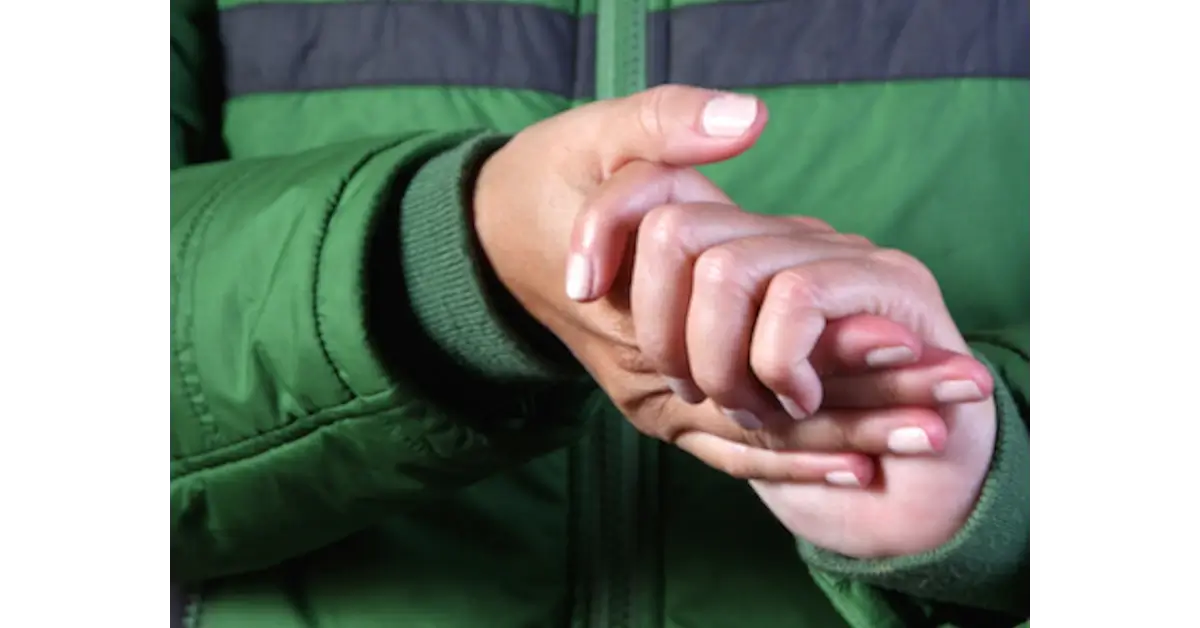It’s cold outside—and wet, winter weather may exacerbate Carpal Tunnel Syndrome (CTS).
Your hand hurts and there is a lack of flexibility. Your fingers can feel swollen and stiff. There is pain radiating up your arm, perhaps traversing your neck and shoulders.
Those are only a few of the signs of Carpal Tunnel Syndrome, a problem that is now affecting between 4 and 10 million Americans in and out of the workplace. How to cure it, however, depends on the cause. If you suspect you are suffering from the symptoms of Carpal Tunnel Syndrome, you need to understand the root causes and consult a medical professional.
Carpal Tunnel Syndrome (CTS) is a progressive and painful condition caused by increased pressure on the median nerve, which runs from the forearm into the palm of the hand. The carpal tunnel, which is at the base of the hand, is a passageway of ligaments and bones that house the median nerve and tendons. When the tendons thicken and become irritated, swelling causes the median nerve to become compressed, resulting in pain and discomfit.
For most people, the hands are critical to performing mundane daily tasks. We do everything — write, eat, work, hug our loved ones and gesture — with our hands. We assume we will always be able to do that. We generally take our hands for granted, until something happens and pain takes over our lives for every minute of every day.
CTS is not about catastrophic injury – most of the time it is the result of where we work and what we do at work. This includes tasks like the long-term use of vibrating hand tools commonly used on construction projects; repetitive or stressful movement, such as long hours at a computer keyboard; and, at times, no definitive cause. CTS could also be the result of physical factors, like obesity; hypothyroidism; Rheumatoid arthritis; and others.
There are numerous non-medical “treatments” available that purport to help people deal with the pain of CTS. Most are nothing more than patent medicine, and are unlikely to provide any relief. Perhaps the best way to obtain relief is to have a specialist examine your hands. The doctor is likely to perform a nerve conduction study that will pinpoint whether the median nerve is the prime suspect in causing your pain.
While surgery is an option, and ultimately may be required, there are several simple treatments an expert hand specialist can employ that could alleviate pain. A splint will help keep the wrist in a straight position and can reduce inflammation; refraining from the repetitive actions that may be the cause of pain; over-the-counter anti-inflammatories, such as ibuprofen, could reduce pain and swelling; and physical therapy. Cortisone injections, which relieve pain and inflammation, may also be recommended.
If nonsurgical treatments fail to alleviate pain over a period of six months or more, patients should consider surgery.
In a procedure called Carpal Tunnel Release, the band of tissue around the wrist is severed to reduce pressure on the median nerve. The operation, performed on an outpatient basis, is usually done on both hands. Another option is Open Release Surgery, in which the doctor makes a small incision (usually not more than 2 inches in length) in the wrist and cuts the carpal ligament, which in turn makes the carpal tunnel larger. Another option is Endoscopic Surgery, where the surgeon makes a pair of incisions, one in the wrist, the other in the palm, and then inserts a camera for a close inspection of the tissue. The carpal ligament is cut and the operation, performed under local anesthesia, tends to limit scarring and scar tissue.
Surgery has the potential to reduce and possibly eliminate the symptoms and pain attributed to CTS, but a patient should expect a period of recovery that could take several months, or more.
Most patients require physical therapy after surgical procedures to restore strength in the wrist. Those with occupational issues might find it necessary to alter what they do at work, or even change jobs completely.
Being afflicted with CTS is no laughing matter. You feel the pain, but to other people, the notion of time off from work for a condition that they cannot easily see often paints the sufferer as a malingerer or a hypochondriac. Nothing could be further from the truth, especially when you are feeling pain every minute of every day.
Dr. Michael Horowitz has an acute understanding of the pain and problems surrounding CTS. At the Center for Musculoskeletal Disorders, our thorough and personalized approach guarantees we serve your needs as best as possible.

